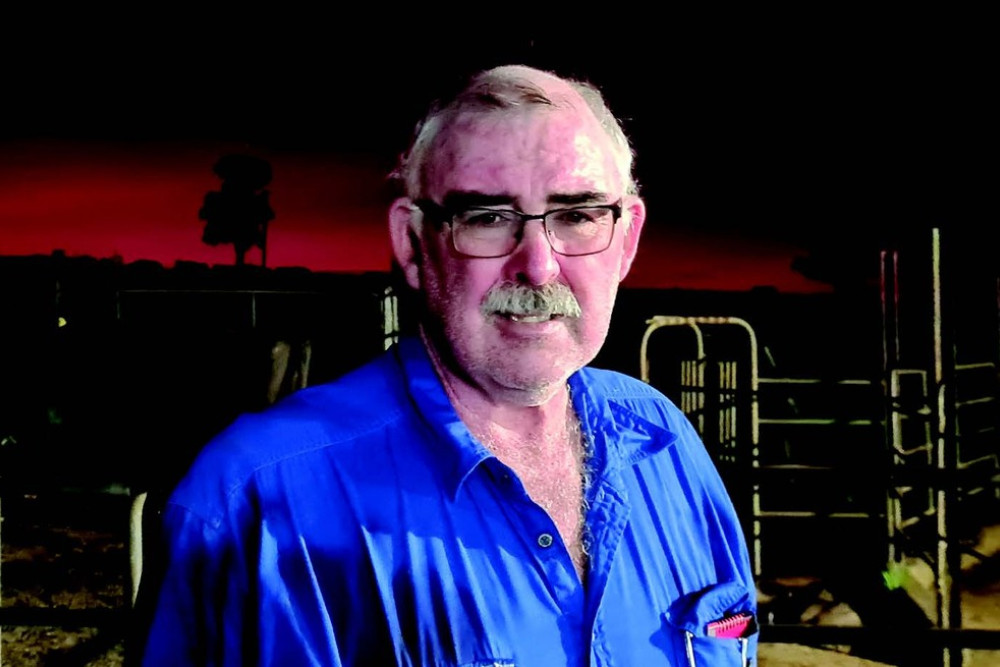On The Land
25 March, 2022
Decision time for dairy farmers
EASTAUSMILK State councillor and fourth generation dairy farmer, James Geraghty, has urged fellow farmers to support the Levy Poll Advisory Committee's (LPAC) recommended proposal for a 20 per cent increase in the statutory dairy service levy paid by farmers.

The poll, which includes all levy payers, opened on 24 February and closes on 31 March. It represents the first opportunity in a decade for farmers to have a say in how much levy they pay and there are mixed feelings on what that amount should be.
Mr Geraghty is 100 per cent supportive of the proposed 20 per cent increase, which he says is “not about today, tomorrow or even next year, but about the next generation of farmers”.
“In this district, every heat detection course, every mastitis course, every lame cow, grass growing, rye grass course, fertiliser and effluent management course provided has been funded in some shape or form by Dairy Australia and wouldn't have happened without them!” he said.
And while any rise in production costs induces financial trauma, Mr Geraghty says “most farmers don't even know what they are currently paying – which is an annual levy of $4000 per 1,000,000 litres of milk produced”.
The average Tableland dairy farm has a milking herd of around 200 head, producing around 1.2 million litres of milk annually, representing a real levy increase of around $800 per year.
“All our greatest gains in milk production have been a result of research and development projects carried out within our industry. I believe no levy, equates to no work done on such projects and no gains in production for our next generation,” he said.
“Do I agree with everything Dairy Australia has done over the years – no I don't! Do I think they haven't done things they should have done – yes I do! But now is the time to vote for change and we can argue the finer points later.”
The dairy service levy is invested by Dairy Australia in services to benefit dairy farmers and protect their right to farm. These investments include research and innovation, supporting farm business management and responding to events such as drought, bushfires or Covid.
Its scope of operation includes developing tools to adapt to climate challenges, supporting on-farm employment needs, marketing of dairy products nationally and internationally and commitment to sustainability, policy research and industry insights.
The president of the national advocacy body, Australian Dairy Farmers (ADF), Rick Gladigau, offers a different message however.
He says farmers alone “had shouldered the cost of the levy for too long” and believed “processors must provide significant and proportionate funding to projects that would benefit the whole supply chain”.
“Since 2019, the ADF has been calling on processors to contribute to the post-farm gate work done by Dairy Australia, with the most appropriate and fairest mechanism being a statutory levy,” Mr Gladigau said.
“For these reasons, the ADF board does not support an increase in the farmer service levy. Now is not the right time to raise the levy on farmers, considering we are emerging from an extended downturn. The ADF recognises the diverse range of views on this, and strongly encourages all farmers to vote in Dairy Poll 2022.”
Meanwhile, after nearly four years, Woolworths will phase out its 10 cent/ litre drought levy on its own brand, 2L and 3L bottles of milk by the end of June. The initiative, which first hit the shelves in October 2018, has raised in the vicinity of $100 million for farmers.
Citing improved seasonal farming conditions delivered by a La Nina rain event and a 15 per cent boost to milk prices in the last four years, Woolworth's commercial director of dairy, Jason Mc Quaid, said it was time to bring the scheme to an end.
Acknowledging returns had finally started to improve for dairy farmers, Mr Geraghty was concerned that as in so many other rural business, benefits from long-awaited price increases were being eroded by the dramatic increase of input costs such as fuel, fertiliser, insurance, electricity and steel products.
“The drought levy has been a hell of a boost to us and we are not looking forward to it ending, but we are just hoping for a similar outcome as that negotiated for southern suppliers to the French owned processor, Lactalis (formerly Parmalat Australia),” he said.
“Lactalis issued a letter to its farmers on the verge of losing their drought levy, stating the 10 cents per litre would not be lost, but rather, would be built into the purchase price paid by consumers in the future.”


